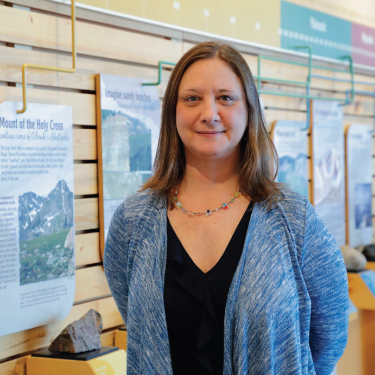 Can you feel it? Can you feel the warmth? Traveling over 93 million miles through the void and darkness of space, the sun’s light brings warmth and life to our planet. Logically, we know that the sun is just another star, but that’s kind of like thinking of your mom as “just another person.” The sun is special to us, mostly through the accident of proximity; but whatever the rhyme or reason, the sun’s nearness to us means the difference between life and no life on our planet.
Can you feel it? Can you feel the warmth? Traveling over 93 million miles through the void and darkness of space, the sun’s light brings warmth and life to our planet. Logically, we know that the sun is just another star, but that’s kind of like thinking of your mom as “just another person.” The sun is special to us, mostly through the accident of proximity; but whatever the rhyme or reason, the sun’s nearness to us means the difference between life and no life on our planet.
Today is a fitting day to honor the sun, as the Earth’s North Pole tilts towards its rays and we celebrate the summer solstice in the Northern Hemisphere. The summer solstice is famous as the longest day of the year, and the length of daylight depends on your latitude. Here in the Eagle Valley, we will experience almost 15 hours of daylight. The sun’s rising is scheduled for 5:38 AM, with the first light of dawn expected to be visible beginning at around 3:36. Sunset is expected at a precise 8:37 PM, with full darkness not descending until the late hour of 10:39. This means that, while actual day length is 14 hours and 58 minutes, we will have light for almost 19 hours!
The summer solstice provides us with a long day filled with light and warmth, but making the most of these gifts is up to us. Author Ed Abbey tells us to, “get out there and hunt and fish … ramble out yonder and explore the forests, climb the mountains, bag the peaks, [and] run the rivers.” And if you haven’t ever gotten up before dawn to be on the trailhead before the sun rises, it’s truly something you have to experience, especially with these made-for-adventure long summer days. But maybe you are more of a homey type, and you would rather celebrate the lengthening light by working in your garden or reading a book into the fading twilight. Enjoying the “lazy days of summer” is perfectly alright too; no judgment here. The important part is that you get out there and “enjoy it. While you can. While it’s still here,” as Ed Abbey also famously said.
Interestingly, most modern calendars consider the solstice to be the first day of summer, but that’s a hard pill to swallow in places where summer is well on its way by June 21. It might be more accurate to consider it as a midsummer point, and many cultures follow this train of thought. In fact, Shakespeare’s famous comedy, A Midsummer Night’s Dream, was said to be set on this famous date. Essentially, it comes down to how we define the seasons. The accepted astronomical definition is that the seasons begin on the solstices (summer and winter) and equinoxes (spring and fall). This makes sense if you consider the time it takes for our planet to absorb enough heat from these long days, making the time after the solstice the hottest part of the year, which we traditionally call summer. Meteorologists, however, consider the start of each season to be the first of the month, so June 1 is the first day of summer, September 1 is the first day of fall, and so on.
The name solstice derives from the Latin for “sun stops”, named for the fact that the sun appears to stand still at its high point on the sky on this day. The solstice was a day that was revered and celebrated by diverse cultures throughout history, in ways great and small, practical and spiritual. And as long as the sun continues to shine, it deserves to be celebrated, for all its glory and in all its magnificence. So how will you pay homage to the sun’s great fiery goodness on this day when the sun stands in the sky? Will you simply look up and give a silent thanks for the warmth of the sun on your face? Or will you paint your face and dance wildly around the bonfire, connecting with your pagan roots through ritual and song? Whatever you choose to do to honor this moment in time and space, let it be sincere and let it show your appreciation of all the sun means and all that it brings. It’s the least we can do.
Jaymee Squires is the Director of Graduate Programs at Walking Mountains Science Center in Avon. She loves summer and is keeping herself busy trying to make the most of every minute. Get these articles delivered to your inbox every week, click here to sign up!









